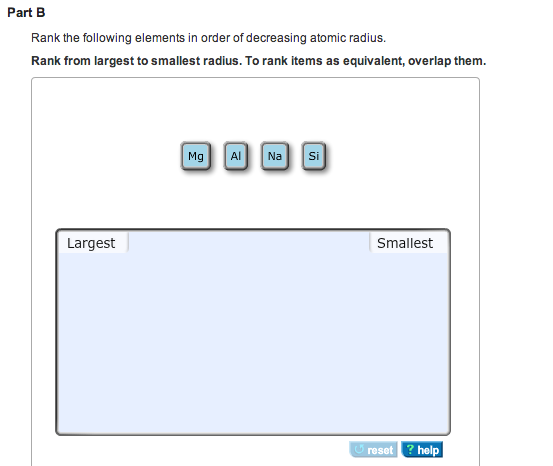


So I will write it isn't possible to definitively write about atomic radius - but (and I don't know how you measure it) the wave-function probablistic "there isn't a definitive radius" approach is maybe the most soundĪnd click around for different electron density plots for different orbitals to try and visualise this idea of electron probability density. But is this atomic radius? No, because the ions have gained or lost electrons which affect their "radius"ģ) I'm sure there is a technique to determine interatomic distances between atoms in covalent molecules but I don't have time to look it up. From this electron density, the mean positions of the atoms in the crystal can be determined, " From the angles and intensities of these scattered beams, a crystallographer can produce a three-dimensional picture of the density of electrons within the crystal. have smallest atomic number while the one having least atomic radius. The atomic radius is the distance from the nucleus. (from wiki) X-ray crystallography is a method of determining the arrangement of atoms within a crystal, in which a beam of X-rays strikes a crystal and scatters into many different directions. The values of atomic radii of alkali metals and halogens have been listed in Table. Among Bromine, Chlorine, Sodium and Calcium the atomic radius of Chlorine is the smallest. Smallest and Largest Atomic Radius Francium has the largest atomic size on the periodic table, and helium has the smallest atomic size. That is, we cannot point to a region or space where the atom ends and hence determine a radiusĢ) If the atoms are in a 3D ionic (or other crystalline) lattice we can use X-ray diffraction to determine accurately inter-ionic distance As shown in the graph below, the atomic radius is largest at the first element in each period, and it decreases down each period. (wiki orbital)" This (atomic orbital) function can be used to calculate the probability of finding any electron of an atom in any specific region around the atom's nucleus" Now, with that out of the way, let's think about what the trends for atomic size or atomic radii would be in the periodic table. So these are all different ways of thinking about it. Atom - the smallest particle of an element that can exist, either alone or in. And so when you have a covalent bond like this, you can then find the distance between the 2 nuclei and take half of that and call that call that the atomic radius. Isn't a problem here about defining what the radius of an atom is?ġ) If we consider an isolated atom and we accept that the electrons are in fixed energy levels but that The atomic radius for an atom is the distance from the center of the.


 0 kommentar(er)
0 kommentar(er)
